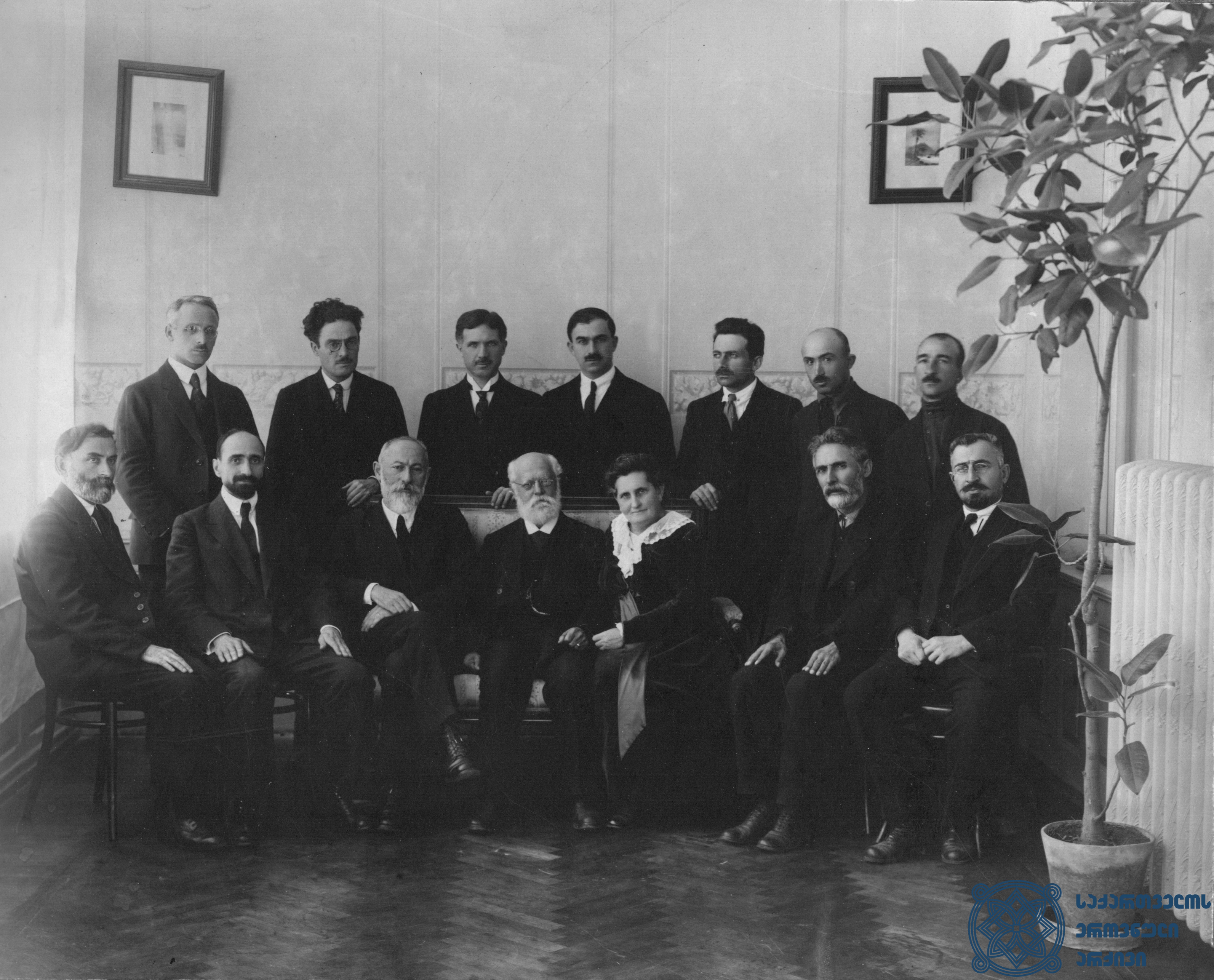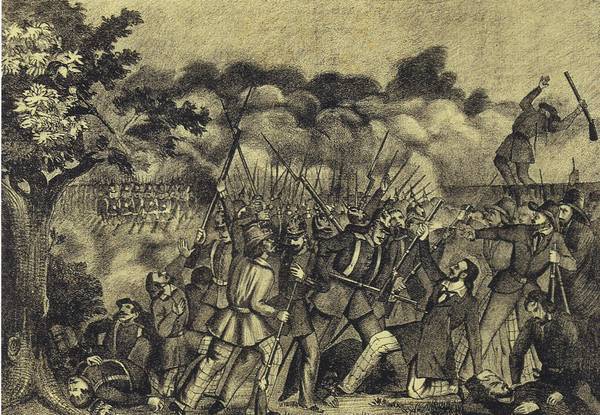|
Revolution And Counter-Revolution In Germany
''Revolution and Counter-Revolution in Germany'' (German: ''Revolution und Konterrevolution in Deutschland'') is a book by Friedrich Engels, with contributions by Karl Marx. Originally a series of articles in the ''New York Daily Tribune'' published from 1851 to 1852 under Marx's byline, the material was first published in book form under the editorship of Eleanor Marx Aveling in 1896. It was not until 1913 that Engels' authorship was publicly known although some new editions continued to appear incorrectly listing Marx as the author as late as 1971. Publication history Original journalism Early in 1851 Charles Dana, then an editor of the ''New York Daily Tribune,'' suggested to Karl Marx that he should contribute topical and historical writings to the newspaper.Lev Churbanov, "Notes" to ''Collected Works of Karl Marx and Frederick Engels: Volume 11: Marx and Engels, 1851-53.'' New York: International Publishers, 1979; pg. 629, fn. 1. Dana was alerted to the possible availabilit ... [...More Info...] [...Related Items...] OR: [Wikipedia] [Google] [Baidu] |
Karl Kautsky
Karl Johann Kautsky (; ; 16 October 1854 – 17 October 1938) was a Czech-Austrian philosopher, journalist, and Marxist theorist. Kautsky was one of the most authoritative promulgators of orthodox Marxism after the death of Friedrich Engels in 1895 until the outbreak of World War I in 1914. He was the most important socialist theorist during the years of the Second International. He founded the socialist journal ''Neue Zeit''. Following the war, Kautsky was an outspoken critic of the Bolshevik Revolution, engaging in polemics with Vladimir Lenin, Leon Trotsky and Joseph Stalin on the nature of the Soviet state. Life and career Early years Karl Kautsky was born in Prague of an artistic and middle class family of Slavic descent – his parents were Johann Kautsky (a Czech scenic designer) and Minna, née Jaich (an Austrian actress and writer). The family moved to Vienna when Kautsky was the age of seven. He studied history, philosophy and economics at the University of Vienna ... [...More Info...] [...Related Items...] OR: [Wikipedia] [Google] [Baidu] |
1848 In Prussia
1848 is historically famous for the wave of revolutions, a series of widespread struggles for more liberal governments, which broke out from Brazil to Hungary; although most failed in their immediate aims, they significantly altered the political and philosophical landscape and had major ramifications throughout the rest of the century. Ereignisblatt aus den revolutionären Märztagen 18.-19. März 1848 mit einer Barrikadenszene aus der Breiten Strasse, Berlin 01.jpg, Cheering revolutionaries in Berlin, on March 19, 1848, with the new flag of Germany Lar9 philippo 001z.jpg, French Revolution of 1848: Republican riots forced King Louis-Philippe to abdicate Zeitgenössige Lithografie der Nationalversammlung in der Paulskirche.jpg, German National Assembly's meeting in St. Paul's Church Pákozdi csata.jpg, Battle of Pákozd in the Hungarian Revolution of 1848 Events January–March * January 3 – Joseph Jenkins Roberts is sworn in, as the first president of the ind ... [...More Info...] [...Related Items...] OR: [Wikipedia] [Google] [Baidu] |
1848 In The Austrian Empire
1848 is historically famous for the wave of revolutions, a series of widespread struggles for more liberal governments, which broke out from Brazil to Hungary; although most failed in their immediate aims, they significantly altered the political and philosophical landscape and had major ramifications throughout the rest of the century. Ereignisblatt aus den revolutionären Märztagen 18.-19. März 1848 mit einer Barrikadenszene aus der Breiten Strasse, Berlin 01.jpg, Cheering revolutionaries in Berlin, on March 19, 1848, with the new flag of Germany Lar9 philippo 001z.jpg, French Revolution of 1848: Republican riots forced King Louis-Philippe to abdicate Zeitgenössige Lithografie der Nationalversammlung in der Paulskirche.jpg, German National Assembly's meeting in St. Paul's Church Pákozdi csata.jpg, Battle of Pákozd in the Hungarian Revolution of 1848 Events January–March * January 3 – Joseph Jenkins Roberts is sworn in, as the first president of the inde ... [...More Info...] [...Related Items...] OR: [Wikipedia] [Google] [Baidu] |
Revolutions Of 1848
The Revolutions of 1848, known in some countries as the Springtime of the Peoples or the Springtime of Nations, were a series of political upheavals throughout Europe starting in 1848. It remains the most widespread revolutionary wave in European history to date. The revolutions were essentially Democracy, democratic and Liberalism, liberal in nature, with the aim of removing the old Monarchy, monarchical structures and creating independent nation-states, as envisioned by romantic nationalism. The revolutions spread across Europe after an initial revolution began in French Revolution of 1848, France in February. Over 50 countries were affected, but with no significant coordination or cooperation among their respective revolutionaries. Some of the major contributing factors were widespread dissatisfaction with political leadership, demands for more participation (decision making), participation in government and democracy, demands for freedom of the press, other demands made by th ... [...More Info...] [...Related Items...] OR: [Wikipedia] [Google] [Baidu] |
German Revolutions Of 1848–1849
The German revolutions of 1848–1849 (), the opening phase of which was also called the March Revolution (), were initially part of the Revolutions of 1848 that broke out in many European countries. They were a series of loosely coordinated protests and rebellions in the states of the German Confederation, including the Austrian Empire. The revolutions, which stressed pan-Germanism, demonstrated popular discontent with the traditional, largely autocratic political structure of the thirty-nine independent states of the Confederation that inherited the German territory of the former Holy Roman Empire after its dismantlement as a result of the Napoleonic Wars. This process began in the mid 1840s. The middle-class elements were committed to liberal principles, while the working class sought radical improvements to their working and living conditions. As the middle class and working class components of the Revolution split, the conservative aristocracy defeated it. Liberals were for ... [...More Info...] [...Related Items...] OR: [Wikipedia] [Google] [Baidu] |
Books By Karl Marx And Friedrich Engels
A book is a medium for recording information in the form of writing or images, typically composed of many pages (made of papyrus, parchment, vellum, or paper) bound together and protected by a cover. The technical term for this physical arrangement is ''codex'' (plural, ''codices''). In the history of hand-held physical supports for extended written compositions or records, the codex replaces its predecessor, the scroll. A single sheet in a codex is a leaf and each side of a leaf is a page. As an intellectual object, a book is prototypically a composition of such great length that it takes a considerable investment of time to compose and still considered as an investment of time to read. In a restricted sense, a book is a self-sufficient section or part of a longer composition, a usage reflecting that, in antiquity, long works had to be written on several scrolls and each scroll had to be identified by the book it contained. Each part of Aristotle's ''Physics'' is called a bo ... [...More Info...] [...Related Items...] OR: [Wikipedia] [Google] [Baidu] |





